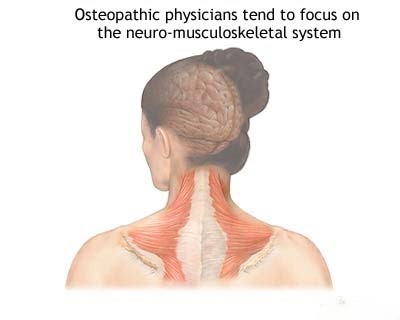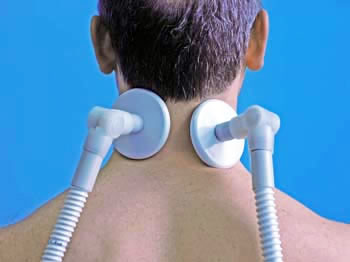Myofascial syndrome (fibromyalgia, muscle pain)
Myofascial Pain Syndrome & Fibromyalgia: Overview
Chronic muscle pain is a frequent complaint, often associated with musculoskeletal issues, including those related to spinal structures [1]. Myofascial Pain Syndrome (MPS) is characterized by localized muscle pain originating from trigger points – hyperirritable spots within a taut band of skeletal muscle or its fascia [1, 2]. Pressing on these trigger points elicits local tenderness and often referred pain (pain felt in a different area following a predictable pattern) [1, 2].
Fibromyalgia (FM) is a distinct, chronic condition characterized by widespread musculoskeletal pain, fatigue, sleep disturbances, cognitive difficulties ("fibro fog"), and multiple tender points (though tender point count is no longer required for diagnosis) [1, 3]. While both involve muscle pain, MPS is typically regional with identifiable trigger points, whereas fibromyalgia involves widespread pain and tenderness along with systemic symptoms [1]. The term "myositis" specifically refers to inflammation of the muscle tissue itself, which is generally *not* the primary pathology in MPS or fibromyalgia, although secondary inflammation can occur [1].
Skeletal muscles, essential elements of the musculoskeletal system, can exist in various states affecting function and potentially causing pain: normal tone, excessive tightness/shortening (contracture), weakness/inhibition, or localized areas of hypertonicity and pain (trigger points in MPS) [1].
The location and patterns of referred pain from trigger points in MPS can be diverse, affecting virtually any part of the body [1, 2]. Similarly, the widespread pain of fibromyalgia can manifest differently among individuals.
Myofascial Pain Syndrome & Fibromyalgia: Diagnosis
Myofascial Pain Syndrome (MPS) often arises from muscle overuse, repetitive strain, poor posture, direct trauma, or sometimes psychological stress [1, 2]. It frequently manifests as localized or regional pain, described as aching or burning, often associated with specific activities or positions (e.g., prolonged sitting leading to neck/shoulder blade pain) [1].
Fibromyalgia's onset can be gradual or triggered by physical/emotional trauma or illness [1, 3]. Patients typically report widespread pain (present above and below the waist, on both sides of the body), often accompanied by significant fatigue, non-restorative sleep, cognitive difficulties, and sensitivity to touch [1, 3]. Headaches, irritable bowel syndrome, and mood disorders are common co-occurring conditions [3].
Diagnosis of both MPS and fibromyalgia is primarily clinical, based on history and physical examination [1, 2, 3].
- MPS Diagnosis: Relies on identifying characteristic trigger points (taut bands within muscle that are exquisitely tender and reproduce the patient's typical referred pain pattern upon palpation) and associated restricted range of motion [1, 2]. Muscle strength is typically normal unless inhibited by pain [1].
- Fibromyalgia Diagnosis: Based on criteria involving widespread pain index (WPI) and symptom severity (SS) scale, considering fatigue, cognitive symptoms, and sleep disturbance, along with ruling out other conditions that could explain the symptoms [3]. While tender points were previously central to diagnosis, they are no longer required but may still be assessed [3].
Common pain locations reported by patients can include (but are not limited to) [1]:
- Neck and upper back/shoulder girdle muscles (trapezius, levator scapulae, rhomboids).
- Low back and gluteal muscles (quadratus lumborum, piriformis).
- Masticatory muscles (masseter, temporalis - causing jaw pain/TMJ symptoms).
- Muscles around major joints (shoulder, hip, knee).
- Forearm muscles (contributing to elbow or wrist pain).
- Calf muscles (gastrocnemius, soleus).
Laboratory tests (CBC, inflammatory markers like ESR/CRP, thyroid function, etc.) and imaging studies (X-ray, MRI) are typically normal in both MPS and fibromyalgia and are primarily used to exclude other potential causes of pain, such as structural joint disease, inflammatory arthritis, infection, malignancy, or neurological disorders [1, 2, 3]. Electromyography (EMG) is usually normal unless there is associated nerve entrapment [1].
Differential Diagnosis of Chronic Muscle Pain
| Condition | Key Features / Distinguishing Points | Typical Investigations / Findings |
|---|---|---|
| Myofascial Pain Syndrome (MPS) | Regional muscle pain. Presence of trigger points (taut band, local twitch response, referred pain on palpation). Associated muscle stiffness/weakness possible. | Clinical diagnosis based on trigger point exam. Labs and imaging usually normal. |
| Fibromyalgia (FM) | Widespread pain (bilateral, above/below waist, axial). Significant fatigue, sleep disturbance, cognitive issues ("fibro fog"). Multiple tender points (may be present). | Clinical diagnosis based on criteria (WPI/SS). Labs and imaging typically normal, used to exclude other conditions. |
| Inflammatory Myopathy (Polymyositis/Dermatomyositis) | Progressive proximal muscle weakness (difficulty rising from chair, climbing stairs, lifting arms). Muscle pain/tenderness less prominent than weakness. Dermatomyositis has characteristic skin rash (Gottron's papules, heliotrope rash). | Elevated muscle enzymes (CK, aldolase). EMG shows myopathic changes. Muscle biopsy confirms inflammation/necrosis. Specific autoantibodies (e.g., Anti-Jo-1). |
| Polymyalgia Rheumatica (PMR) | Age >50 typically. Stiffness and aching pain primarily in shoulder and hip girdles, worse in the morning. Systemic symptoms (fatigue, low-grade fever). Associated with Giant Cell Arteritis. | Markedly elevated ESR/CRP. Normal CK. Rapid response to low-dose corticosteroids. |
| Hypothyroidism | Fatigue, weight gain, cold intolerance, constipation. Can cause diffuse muscle aches (myalgia), stiffness, cramps, sometimes elevated CK. | Elevated TSH, low free T4. CK may be elevated. |
| Vitamin D Deficiency | Can cause diffuse bone pain, muscle aches (myalgia), and weakness. | Low serum 25-hydroxyvitamin D levels. May have secondary hyperparathyroidism. |
| Statin-Induced Myopathy | Muscle pain (myalgia), cramps, weakness developing after starting statin medication. Can range from mild aches to severe rhabdomyolysis (rare). | History of statin use. CK levels may be elevated. Symptoms improve upon stopping statin. |
| Connective Tissue Disease (e.g., SLE, RA) | Often presents with joint pain/arthritis, but myalgia and fatigue can be prominent features. Look for other systemic signs (rash, serositis, specific organ involvement). | Elevated ESR/CRP. Positive specific autoantibodies (ANA, RF, anti-CCP, etc.). Evidence of synovitis or organ involvement. |
| Chronic Fatigue Syndrome (ME/CFS) | Profound, persistent fatigue exacerbated by exertion (post-exertional malaise). Often accompanied by widespread pain, cognitive difficulties, sleep disturbance. Overlaps significantly with Fibromyalgia. | Clinical diagnosis based on criteria after excluding other causes. Labs/imaging typically normal. |
Myofascial Syndrome & Fibromyalgia: Treatment
Treatment for Myofascial Pain Syndrome (MPS) and Fibromyalgia (FM) is often multimodal, aiming to reduce pain, improve function, and manage associated symptoms like fatigue and sleep disturbance [1, 2, 3].
Myofascial Pain Syndrome Treatment: Focuses on inactivating trigger points and restoring normal muscle function [1, 2].
- Manual Therapies: Techniques aimed directly at trigger points:
- Trigger Point Release: Applying sustained pressure to the trigger point.
- Spray and Stretch: Using a vapocoolant spray followed by passive stretching of the involved muscle.
- Massage Techniques: Deep tissue massage, cross-friction massage (therapeutic massage).
- Manual Therapy/Manipulation: Addressing associated joint restrictions.
- Trigger Point Injections: Injecting local anesthetic (e.g., lidocaine, novocaine) or sometimes saline or botulinum toxin directly into the trigger point to disrupt the pain cycle and release the taut band.
- Dry Needling: Inserting a thin needle into the trigger point without injecting medication.
- Stretching Exercises: Regular stretching of the affected muscles is crucial (medical exercise therapy).
- Physical Therapy Modalities: Heat, cold packs (cryotherapy), ultrasound (UHF), electrical stimulation (SMT/TENS), infrared radiation can help reduce pain and muscle spasm.
- Ergonomics and Postural Correction: Addressing factors contributing to muscle strain.
- Medications: Analgesics (NSAIDs, acetaminophen), muscle relaxants (used short-term for spasm).
Fibromyalgia Treatment: Focuses on a combination of pharmacological and non-pharmacological approaches to manage widespread pain, fatigue, sleep issues, and cognitive symptoms [1, 3].
- Patient Education: Understanding the condition is crucial.
- Exercise: Graded aerobic exercise (e.g., walking, swimming, cycling), strength training, and flexibility exercises are highly recommended.
- Cognitive Behavioral Therapy (CBT): Helps manage pain perception, coping strategies, and associated mood/sleep issues.
- Pharmacological Therapy:
- FDA-approved medications: Pregabalin, duloxetine, milnacipran.
- Other medications often used: Tricyclic antidepressants (e.g., amitriptyline) for pain and sleep, cyclobenzaprine (muscle relaxant) for sleep, other antidepressants (SSRIs/SNRIs), analgesics (tramadol, acetaminophen - NSAIDs generally less effective for FM pain). Opioids are generally discouraged.
- Complementary Therapies: Acupuncture, massage therapy, yoga, tai chi may provide benefit for some patients.
- Sleep Hygiene: Strategies to improve sleep quality.
- Addressing Co-occurring Conditions: Treating associated depression, anxiety, IBS, etc.
Treatment for both MPS and FM is often long-term and requires a patient-centered approach, focusing on functional improvement and self-management strategies [1]. Since these conditions typically involve soft tissues rather than direct bone or joint destruction, treatment is primarily conservative, and surgical intervention is generally not indicated unless addressing a separate, co-existing orthopedic issue [1].
References
- Travell JG, Simons DG. Myofascial Pain and Dysfunction: The Trigger Point Manual. Vol 1. 2nd ed. Williams & Wilkins; 1999. (Classic text on MPS).
- Alvarez DJ, Rockwell PG. Trigger points: diagnosis and management. Am Fam Physician. 2002 Feb 15;65(4):653-60.
- Clauw DJ. Fibromyalgia: a clinical review. JAMA. 2014 Apr 16;311(15):1547-55.
See also
- Achilles tendon inflammation (paratenonitis, ahillobursitis)
- Achilles tendon injury (sprain, rupture)
- Ankle and foot sprain
- Arthritis and arthrosis (osteoarthritis):
- Autoimmune connective tissue disease:
- Bunion (hallux valgus)
- Epicondylitis ("tennis elbow")
- Hygroma
- Joint ankylosis
- Joint contractures
- Joint dislocation:
- Knee joint (ligaments and meniscus) injury
- Metabolic bone disease:
- Myositis, fibromyalgia (muscle pain)
- Plantar fasciitis (heel spurs)
- Tenosynovitis (infectious, stenosing)
- Vitamin D and parathyroid hormone







